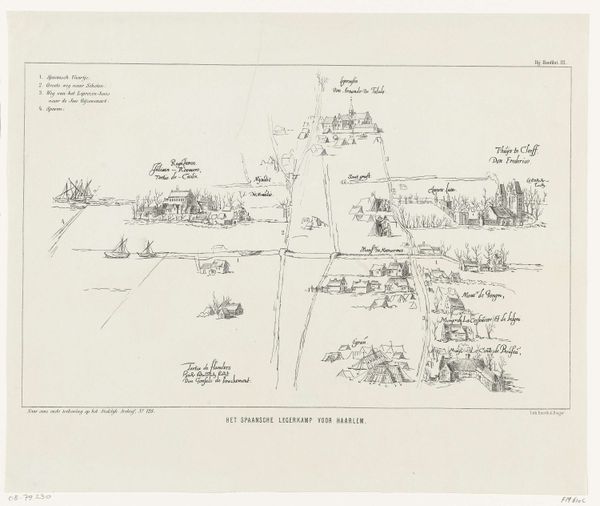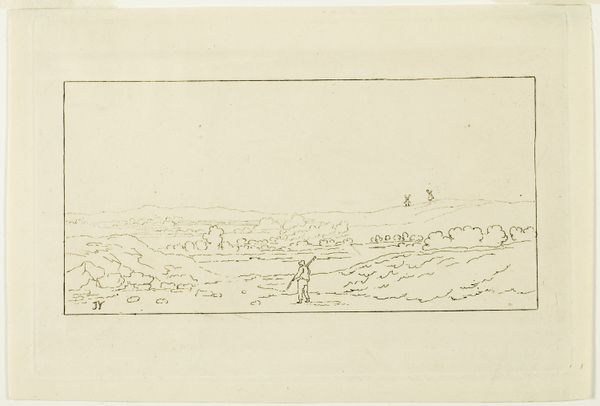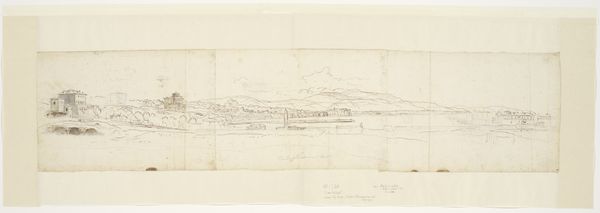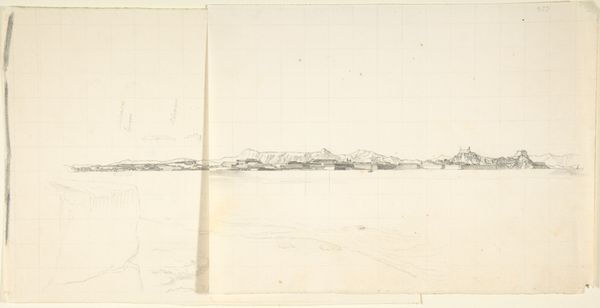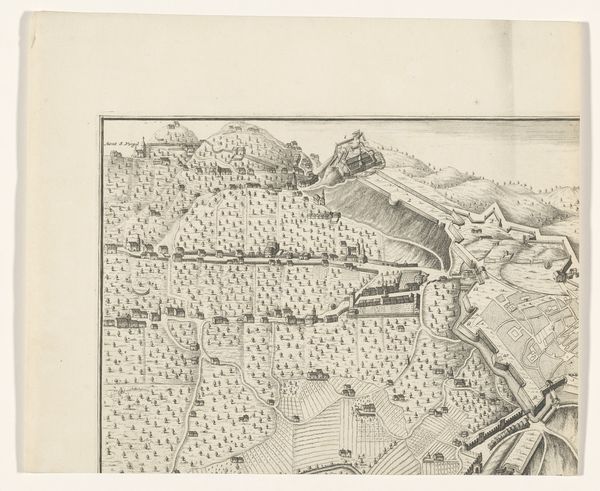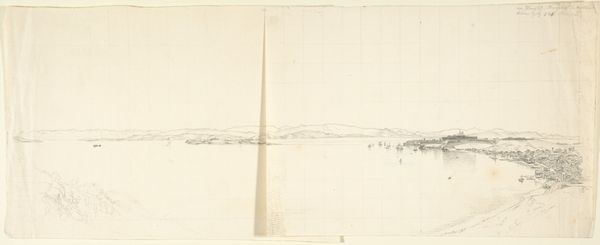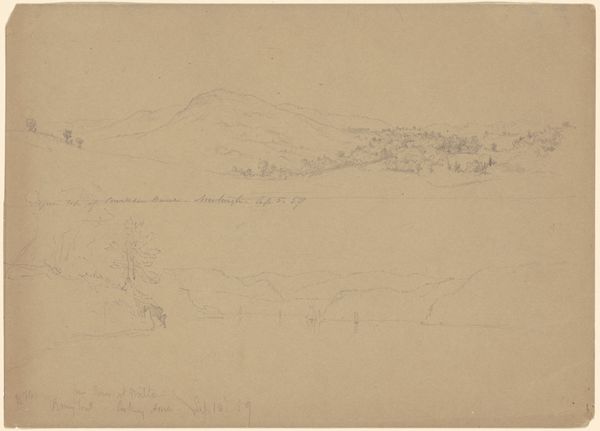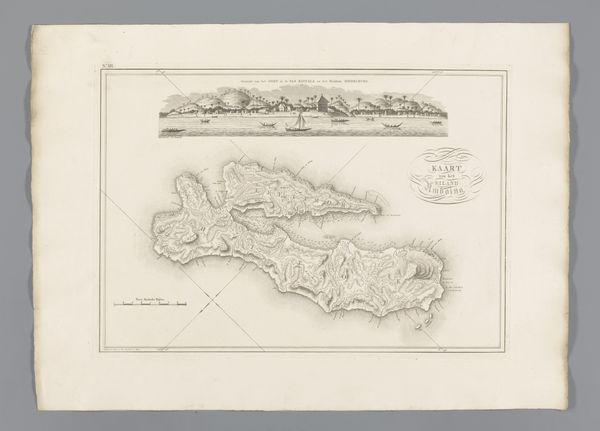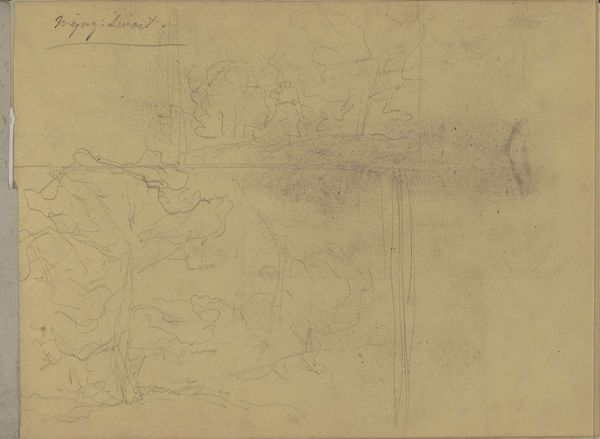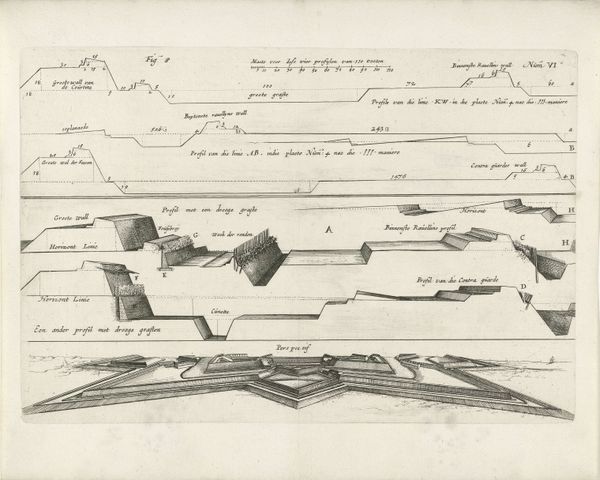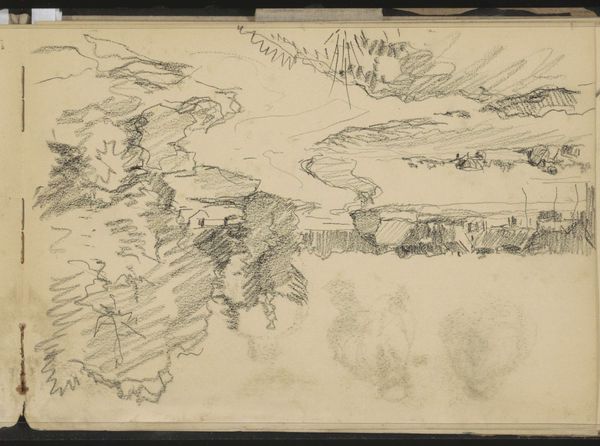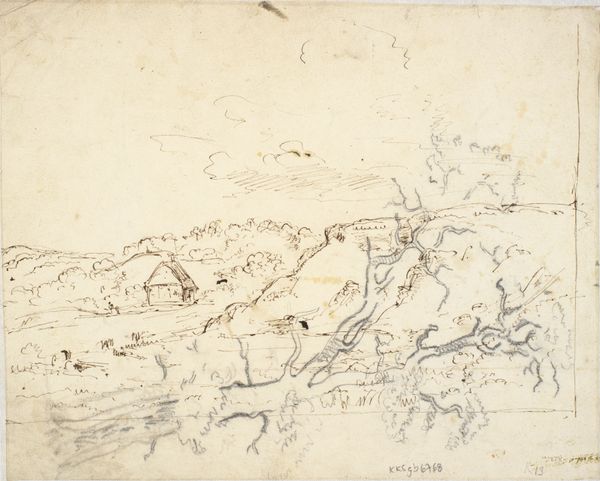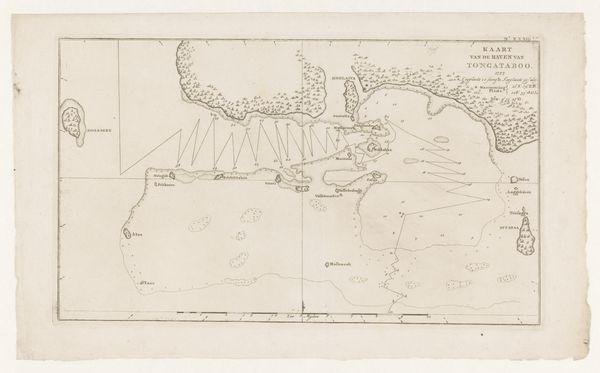
print, etching, engraving
# print
#
etching
#
old engraving style
#
landscape
#
etching
#
engraving
Dimensions: height 229 mm, width 359 mm
Copyright: Rijks Museum: Open Domain
Curator: What a starkly beautiful etching. This is "Kaart van en gezichten op de kust van Tasmanië," or "Map and Views of the Coast of Tasmania," created in 1801 by an anonymous artist. Editor: There’s something deeply melancholic about this piece. The monochrome rendering, the fragile lines—it speaks of both discovery and a kind of colonial haunting, wouldn’t you agree? Curator: Haunting is the word. The careful depictions of the coastline, almost clinical in their precision, were surely made with the intention of establishing control—mapping becomes a form of visual conquest. Editor: Exactly. Think of the Indigenous peoples displaced, their stories erased by this very act of documentation. The image then becomes a complicated symbol, one of geographic curiosity, yes, but also immense cultural violence. Curator: That intersection is precisely why images like these endure, isn't it? On one hand, there's this desire to archive and classify, part of a long history of categorizing the world. On the other, the artwork shows an incomplete story—only capturing what a specific group saw in Tasmania, yet suggesting the entire landscape is known and understood. Editor: And notice the multiple "views" provided at the top—linear and reductive. The visual strategy flattens the complexities of lived experience, creating a skewed, hierarchical perspective where the “civilized” viewer gains a panoramic advantage over an unfamiliar terrain. It mirrors power dynamics. Curator: And yet, within those constraints, the engraver captured details—subtle undulations of the land, variations in coastal geography—elements hinting at a natural world with an ancient lineage long before any claims by colonial powers. These textures resist a purely colonial reading; there's an enduring beauty within this etching. Editor: It's true. While the context complicates our appreciation, the raw skill and precision demand acknowledgement. The act of representation itself becomes a dialogue – an echo of those who shaped that coastline across millennia against the cartographer's desire to contain it. Curator: Ultimately, its power lies in how the symbols reflect conflicting stories—an uneasy reconciliation between possession and place. Editor: A disquieting beauty. An uneasy map that leads us to broader questions of how we create visual representations in order to both learn and exercise control.
Comments
No comments
Be the first to comment and join the conversation on the ultimate creative platform.
